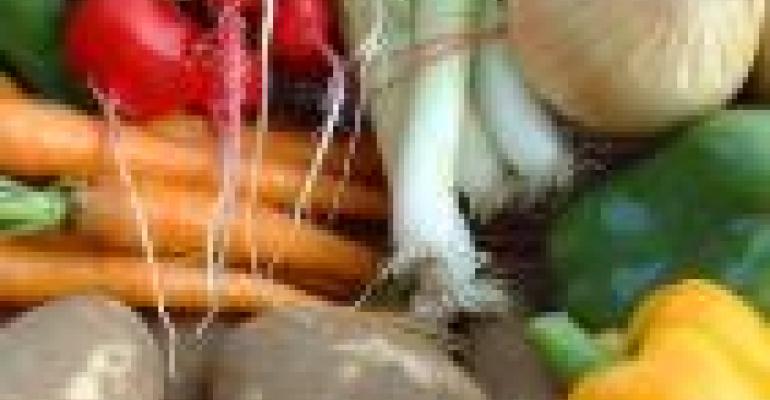It’s that time again. A winter of planning, meetings and logistics has brought us around again to another season of local foods, much of which is just now hitting store shelves.
In produce there might be strawberries or asparagus; there’s also more honey and dairy and meat, now that the spring blooms are out and livestock can get their fill of fresh pastureland.
 Local has become a big draw for retailers of all sizes. Wal-Mart, the world’s largest food retailer, says that 20% of its produce, in season, is local; Whole Foods Market spends 22% of its produce budget sourcing local fruits and vegetables. According to the U.S. Department of Agriculture, local food sales are expected to reach $7 billion by 2012, up from $5 billion in 2007.
Local has become a big draw for retailers of all sizes. Wal-Mart, the world’s largest food retailer, says that 20% of its produce, in season, is local; Whole Foods Market spends 22% of its produce budget sourcing local fruits and vegetables. According to the U.S. Department of Agriculture, local food sales are expected to reach $7 billion by 2012, up from $5 billion in 2007.
The growth of locally grown foods seems to be following the same path taken by organics after the USDA implemented the National Organic Program in 2002; that is, demand quickly outstripped demand.
However, unlike organic, the local movement can’t make up for shortfalls in ingredients of products by heading overseas. So, retailers, producers and the matchmakers in between are stuck trying to work out a system that is efficient, safe and profitable.
According to a new article to be published in the next issue of the Choices, the online magazine of the Agricultural Applied Economics Association, mainstream supermarket growth will depend on the farmer’s ability to meet consumer expectations of quality and price.
“Significant growth in the share of sales for local foods can only be achieved if producers are able to supply competitively priced products with consistent quality in volumes that match supermarket product movement,” said economist Robert King, co-author of the article. “Overcoming [these] challenges will require collaboration among producers and innovative development of localized distribution systems.”
King and his co-authors found that retailers pretty much already have distribution systems in place that can handle local products (whether it’s through direct-to-store, a distribution center or a specialty distributor). Supermarkets also have sophisticated marketing support to help merchandise those items once they’re inside the store. The challenge is for the supply side to find ways to meet retailers at a point where the partnership becomes mutually beneficial. To that end, a number of agricultural matchmakers have sprung up to facilitate relationships. The article mentions Co-op Partners Warehouse and Good Natured Family Farms, while noting that some retailers, such as Wegmans, Rochester, N.Y., have well-establish sourcing systems in-house to handle local product procurement.
“Sales likely will grow for local food products that have cost advantages or unique quality attributes that consumers value,” the report concludes. “Otherwise, it will be difficult for local foods to capture a significantly larger share of supermarket offerings in the near future.”
(Photo credit: Acorn Creek Farm LLC)

